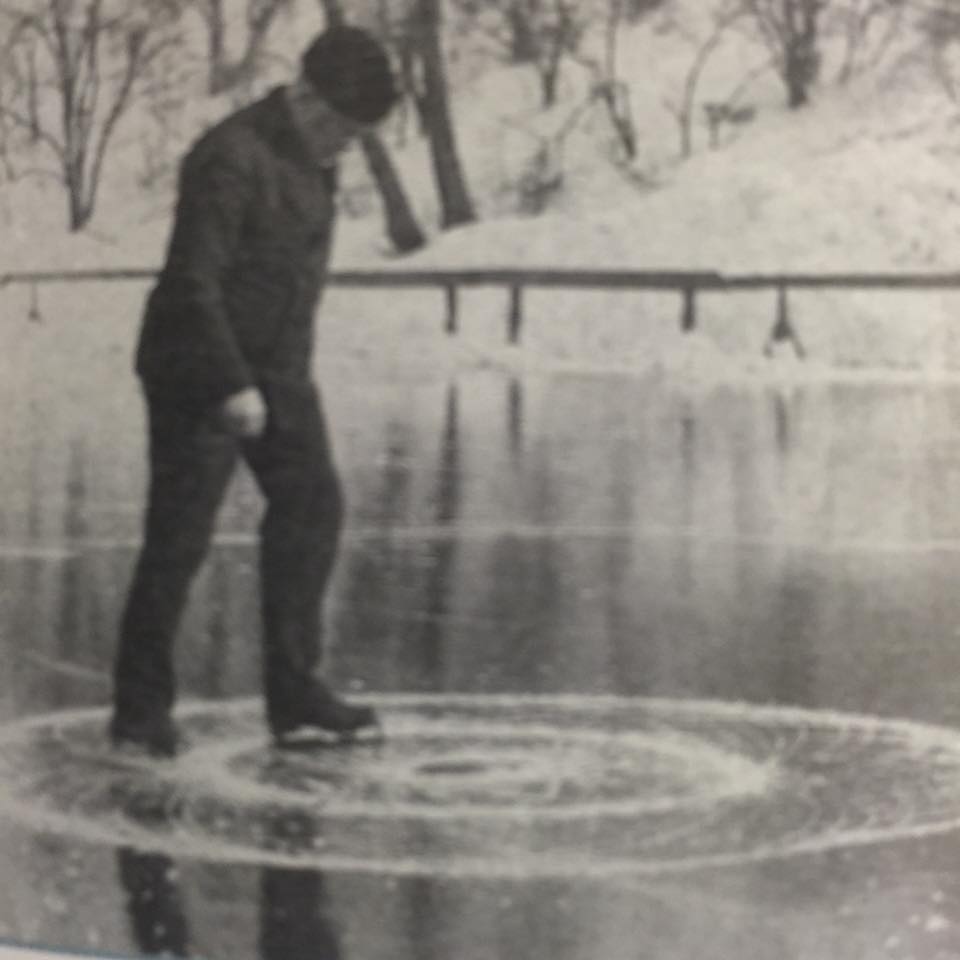Last weekend I was at the World Figure Championship in Vail, Colorado. Exams were being offered, and I decided to study the system experimentally by taking a few. This post is an account of my experience. Since this blog is about studying the history of skating and not my own skating, this post focuses on the examination process, not on how I did. Official details of the exams are available in the exam catalog.
Observations
It was trivial to sign up; I simply told Karen* I was interested in testing the four eights: forward outside, forward inside, backward outside, and backward inside. She said that was certainly doable, but there would be a wait while officials arrived. It turned out that four were necessary:
A facilitator, who assembled all the people involved and selected ice for the warm-up and exam.
An oversight examiner, who made sure I was there and who I claimed. I didn’t realize this person was involved until the end.
A referee, who watched the test and noted any penalties.
A main examiner (judge), who graded the figures.
I warmed up in my assigned spot and, when everyone was ready, moved to the test patch. When the referee said to start, I skated my four eights one by one, moving up the patch each time. I completed six tracings of each without marking my center. I used the same long axis for all four figures. My referee noted no penalties. Then I was asked to disappear into the crowd while the judge had a look.
After the judge had scored my figures, I was shown a sheet with the names of the officials and my scores.** Each figure is scored on a scale of 1–6, with 1 and 2 designated “Encouraging”, 3 and 4 “Competitive”, and 5 and 6 “World Class.” The criteria are the traditional ones described in USFSA publications such as the Rulebook and Evaluation of Errors in Figures. There is no way to fail a test, only encouragement to keep working on a figure. Only one 6 has been received to date, on a forward outside eight at last weekend’s Festival. I was instructed to take a picture of the sheet and enter the data into the database via a form on the World Figure Sport website.
Once all that was done, I received a stack of medals and a certificate. Medals are awarded on a per-figure basis: Gold for World Class figures, silver for Competitive figures, and bronze for Encouraging figures.
Evaluation
Setting up and taking the exams was quite simple and much more low-key than skating tests usually are. The assessment process is summative rather than formative¸ i.e., there is no way for the evaluators to provide the skater with feedback or even explain their marks, unless the skater specifically asks at the end of the exam. This weakness of the system could be ameliorated by adding a space for comments or a checklist of desirable qualities and/or common errors on the examination form.
The other area of possible concern is that there are no levels in the sense of groups of figures that must be tested before others (there are “Figure Foundations” A and B, which are good starting places, and the other figures are grouped by type). Skaters are free to test figures in any order and to re-test figures until they achieve the level they desire. The strength of this approach is that it encourages skaters to keep working on their figures by emphasizing the learning process. Since different people find different figures easier or harder, they can work on figures in the order that makes sense to them rather than following a prescribed order and getting stuck. The weaknesses are that the tests lack a pedagogical structure (this must be provided by the skater or coach) and that there is less of a sense of accomplishment at having finished a level and being officially ready to move on to the next. Skaters must decide for themselves, in consultation with their coaches, what score counts as sufficient. Is a 2 good enough? A 4? Or do you keep working on a figure until you reach the elusive 6? It is possible to re-test figures at any time, which encourages skaters to keep improving all their figures, even the most basic.
Areas for Future Research
Since the role of penalties is unclear and I did well on all four figures I tested, the logical next step is to test some figures I can’t do well.
I am also interested in how the scores match up with the traditional USFSA figure tests. I expect that lower scores correspond to the level of skill expected on lower-level tests, while the Eighth Test may require something closer to World Class ability. These tests are also scored on a 6-point scale, with the number of points needed to pass (the “passing average”) increasing from 2.7 on First Test to 4.5 on Eighth Test.
Notes
*Karen Courtland Kelly, president of the World Figure Sport Society.
**I received 5s on the forward outside and inside eights and 4s on the backward outside and inside eights.





